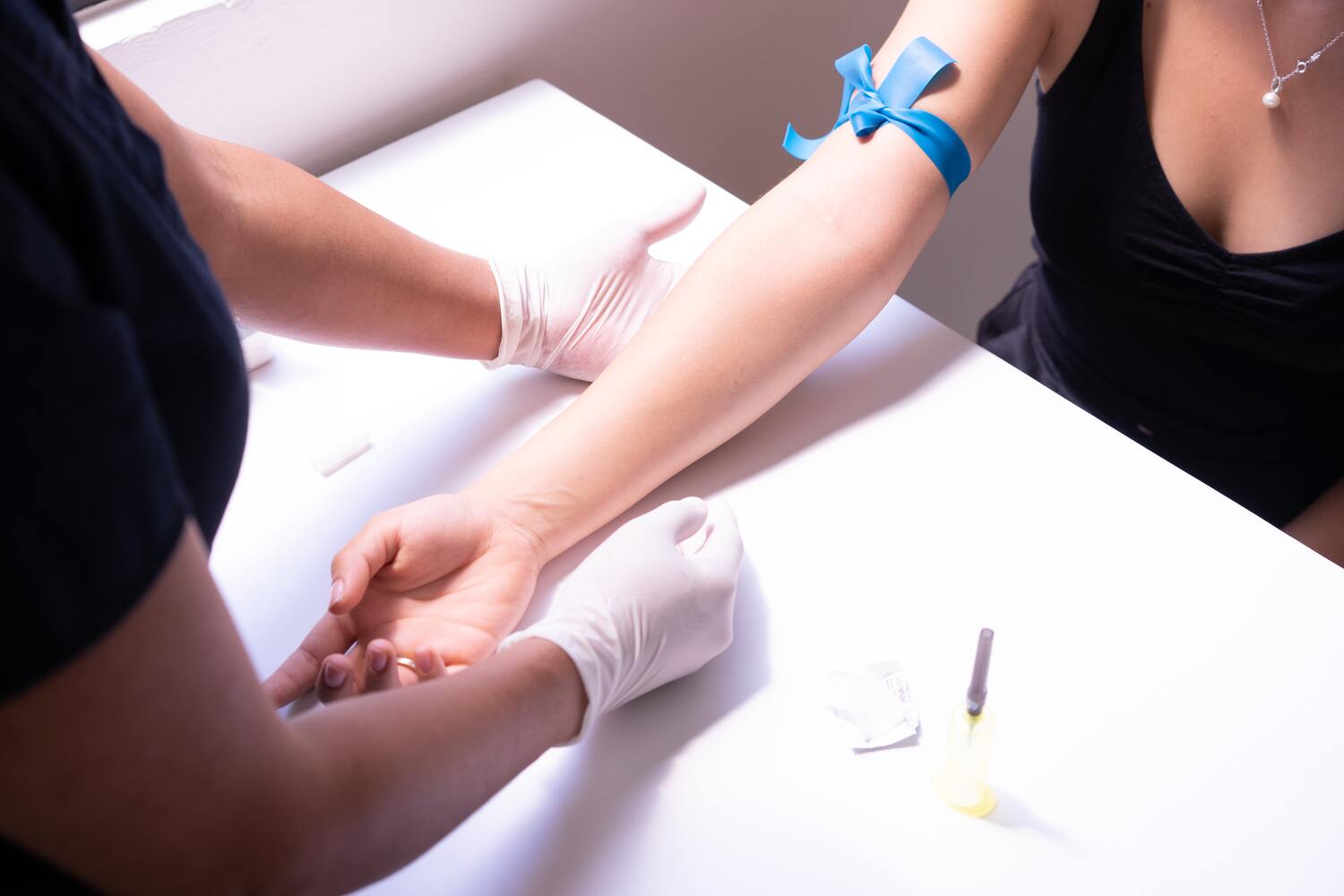Iron plays a vital role in various metabolic activities of the body, such as blood cell generation, oxygen transportation in the blood, and hormone production.
There are two types of iron found in the diet: heme and non-heme iron. Heme iron, which is more easily absorbed, is present in animal products like meat, chicken, and seafood. On the other hand, non-heme iron is derived from plants and fortified foods and is less easily absorbed.
Inadequate dietary intake of iron can lead to iron deficiency, which is more common in individuals who menstruate, or are pregnant, due to increased iron requirements during these times. To learn more about increasing iron levels at home, please refer to our blog post.
What Are Iron Tests?
The evaluation of body iron storage or the amount of iron in blood serum is done using a variety of clinical chemistry laboratory blood tests known as "iron testing." In order to check your blood's level of iron, you can take an iron test.

Iron testing may consist of the following:
Transferrin test
This examination evaluates the blood's level of transferrin, a protein that carries iron.
Serum iron test
This examination evaluates the level of iron in your serum, the liquid portion of your blood. It is sometimes combined with a Total Iron Binding Capacity (TIBC) test, which determines if your blood has an adequate amount of iron or not.
Total iron-binding capacity
The TIBC test evaluates how efficiently iron binds to protein transferrin.
Ferritin test
The quantity of iron the body stores is determined by this test.
Indicators of iron deficiency anemia
When your body doesn't have enough iron, it develops iron deficiency anemia. This can happen if you have a condition that interferes with your capacity to absorb nutrients or if you're getting too little iron from your diet.
The following are some typical signs of iron deficiency anemia:
- Extreme tiredness
- Weakness
- Pale skin
- Shortness of breath or chest pain
- Headache, lightheadedness
- Cold fingers and toes
Indicators of high iron levels
Iron overload, or hemochromatosis, is a condition that occurs when the body absorbs an excessive amount of iron from food. This can lead to health complications such as diabetes, heart disease, and liver problems.
Common indications of iron excess may include:
- Joint pain
- Abdominal discomfort
- Weakness
- Diabetes
- Decreased libido
- Heart failure
- Liver failure
If you are experiencing symptoms of either iron overload or iron-deficiency anemia, it is important to get tested. The most effective way to assess your iron levels remotely is through an at-home test.
How Do I Administer An Iron Test At Home?
Instructions on how to take a sample are included with each at-home test kit. However, people should carefully follow the manufacturer's recommendations to achieve an accurate outcome.
The following steps are necessary for many at-home tests:
- Online kit ordering
- Apply a finger prick test using the materials given.
- Take some blood for testing.
- Deliver the sample to a lab.
- Await the outcome.
Through its website or mobile app, the organization that makes the test kit will let a person know their test results. Some organizations will arrange follow-up phone conversations to discuss test findings that show low or high iron levels. A person should talk to a medical expert about their findings to get guidance and find out about any necessary treatment options.
Home iron tests are sometimes reliable. However, users must adhere to all guidelines in order to provide a valid sample.
How To Prepare For An Iron Level Check?
It is advised to avoid eating before checking your iron levels even if you are following a specific eating habits such as clean eating. The ultimate objective is to avoid anything that might lower your normal iron levels. Your test results may be affected, and your doctor's assessment of your iron requirements may be skewed if you recently consumed iron-rich foods, took an iron supplement, or received a blood transfusion.
Iron-deficiency anemia can lead to serious medical issues if left unchecked and untreated. heart has to work harder when anemia is present to compensate for the deficiency in hemoglobin, or red blood cells. The additional strain on the heart may be harmful.
How To Regulate Iron Level?
Identify and treat the source of any blood loss
If you experience frequent diarrhea or blood in your stool, heavy menstrual cycles, or other digestive issues, consult your doctor.
If you take calcium supplements, consult your doctor
Your body may have more difficulty absorbing iron if you have calcium. Talk to your doctor about the best method to acquire adequate calcium if you have trouble getting enough iron. Calcium home tests can help you to follow your body's needs.

Eat iron-rich foods
Lean meat and chicken, dark, green vegetables, and legumes are all excellent sources of iron. In addition, consume and drink foods that aid in the body's absorption of iron, such as juice, raspberries, broccoli, and other vitamin C-rich fruits and vegetables. You can put yourself on a specific diet to achieve this goal.
Make wholesome food selections
Most people who eat a healthy, balanced diet obtain the iron and vitamins their bodies require from their food. You can conduct an at-home vitamin deficiency test, to guide your food selection.
Coffee and tea shouldn't be consumed with meals
It is not advisable to drink coffee or tea while having meals, as these beverages can impede the absorption of iron in your body.
When To Seek Medical Help?
It is important for a healthcare professional to interpret an individual's iron test results. For instance, a doctor can provide guidance and recommend treatments if a blood test indicates excessively high or low iron levels.
Even if a blood test shows that an individual's iron levels are within a healthy range, they should still consult a doctor if they experience concerning symptoms.
Iron tests measure the amount of iron in the blood and the body's ability to absorb it. The results can indicate either an iron overload or a deficiency. When conducting an iron test at home, it is essential to follow all instructions and seek medical advice if unexpected results are obtained.















